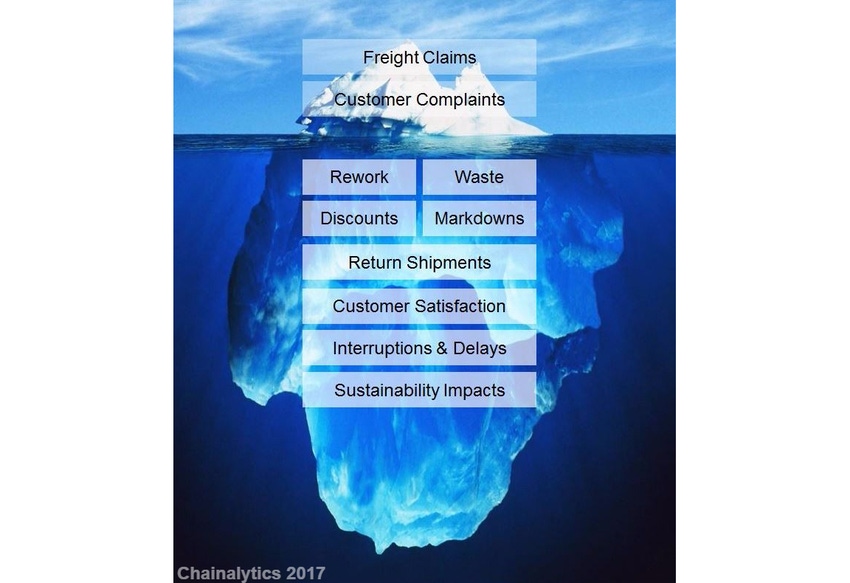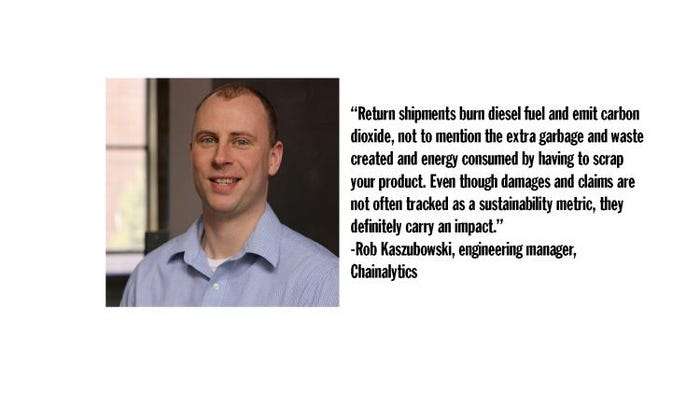7 ways package damage claims are the tip of the iceberg

When it comes to big dollars, product damage claims have the potential to rise to the top of a lot of internal reports and executive dashboards—especially if you’re shipping via complex and/or multi-touch methods.
While everyone wants to ship their products to arrive unscathed and with zero defects, there’s a lot behind the “science of packaging optimization.” Whether your incident rate is a high percentage of total volume shipped or a high dollar amount based on the value of the product, these damages touch multiple facets of an organization and often gain visibility at a high level, including up to the C-suite.
The additional cost factors associated with damaged products and goods
These claim dollars can really add up. But they are just the tip of the iceberg in terms of the total impact to your company’s bottom line, which includes “soft costs” like your brand image and customer satisfaction:
1. Rework and repairs: When the product shows up at the customer location damaged—or needs to be fixed, adjusted or repaired—this cost may include sending a technician to a job site, or to a customer’s location.
2. Return shipments: Assuming your product arrives non-functional, or your customer has elected to reject it due to the damages, you’ll have to pay for a return shipment just to get the damaged product back to your reclamation or repair facility, introducing reverse logistics issues and costs.
3. Expedited logistics: Oftentimes, consumers buy products because they need them quickly (go figure!). In some cases, they need the products to arrive at a certain date and time. If your product shows up damaged you may be on the hook to pay for an expedited shipment to replace your original defective product.

4. Interruptions and delays: Likewise, if you need a part or product to arrive and it shows up damaged, this may cause additional interruptions…machine down time, sending workers, installers, or technicians home. These delays waste time, and we all know that time is money.
5. Customer satisfaction/dissatisfaction: This is a no brainer because nobody wants unhappy customers. This laundry list of damage issues above only adds to customers’ dissatisfaction. (As many of us know, ordering a package to be delivered triggers your dopamine stimulation… there’s a real deflating feeling to have that product arrive dented, damaged or broken.)
6. Discounts and markdowns: Sometimes in lieu of returning the product you can offer customers a discount:
Discounts or markdowns can occur at the retail store –the old scratch and dent sale
These types of discounts erode at your profits and margins.
7. Sustainability: All those return shipments burn up precious diesel fuel and emit carbon dioxide, not to mention the extra garbage and waste created and energy consumed by having to scrap your product. Even though damages and claims are not often tracked as a sustainability metric, they definitely carry an impact.
As you can see, the cascading, multifaceted effect of damages can add up to impact your bottom line. What really helps is to clearly understand the supply chain hazards that impact products’ successful transit and addressing the hidden costs of damage—each of which impacts a company and customers in different ways.
So when your executive team is talking to you about those high damage claims, make sure you’re not just skimming the surface of the ocean ahead, but are thinking about the size of the seemingly small iceberg ahead!
Rob Kaszubowski is Sr. Packaging Consultant at Chainalytics’ Packaging Optimization where he is focused on reducing product damage and implementing packaging cost reduction initiatives. Rob also contributes to the Packaging Matters blog. Connect with Rob on LinkedIn and on Twitter @KazPack1
About the Author(s)
You May Also Like




